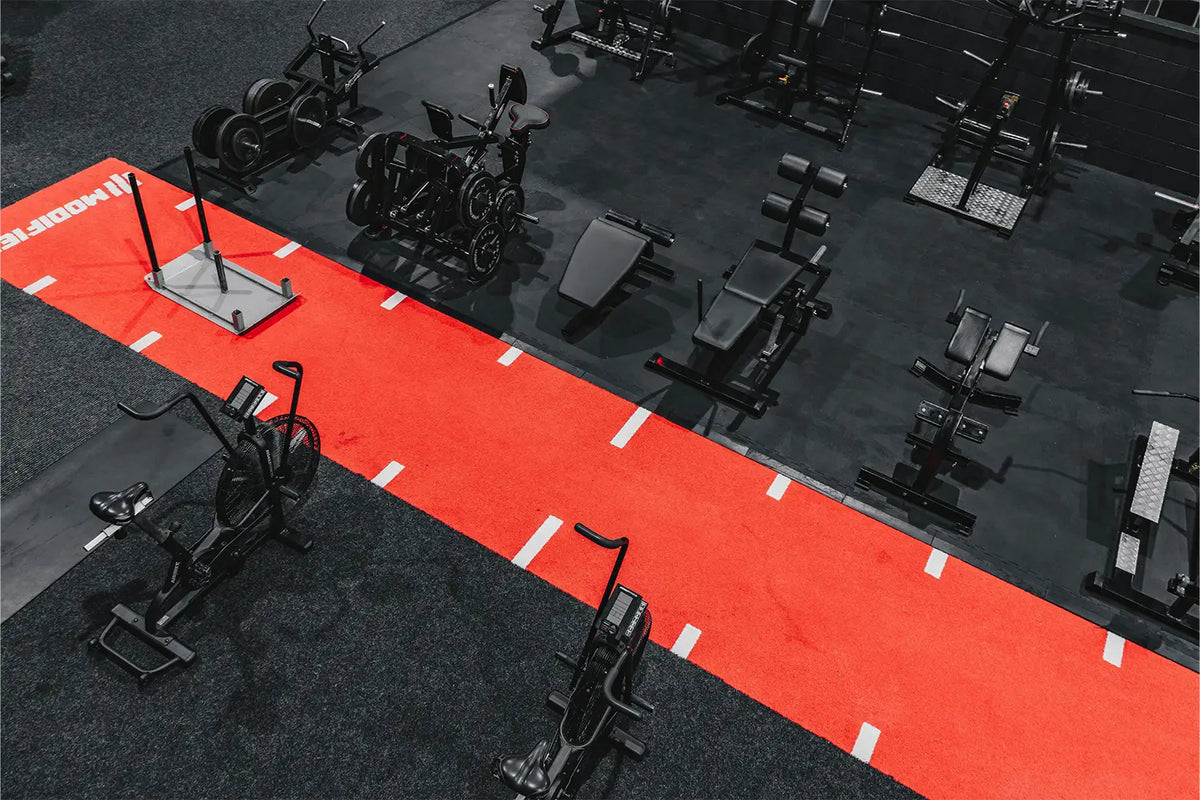
Hybrid Training: How to Combine Strength Training with Running
|
|
Time to read 6 min
|
|
Time to read 6 min
Before we dive into the planning: What is a hybrid athlete? Essentially, it's about having both exceptional strength and impressive endurance. The particular challenge is that strength and endurance goals often conflict with each other (interference effect). Endurance runners are light and try to carry as little fat and muscle mass as possible. In contrast, the strongest men usually have quite a lot of muscle mass and - depending on the discipline - also a lot of body fat.
The hybrid athlete combines these two pillars and tries to excel in both disciplines.
A “hybrid athlete” can combine all kinds of sports. In most cases, however, this is referred to as a strength training + running and/or strength training + cycling split.
Strength training aims to increase muscle strength, size and power. Running focuses on endurance, cardiovascular health and speed. By combining these elements, we create a synergistic relationship that leads to overall fitness. The secret is to find balance and harmony between the disciplines without overtaxing the body.
To design your hybrid training plan, you can do the following:
Monday: Strength training (push training)
Tuesday: Interval runs
Wednesday: Strength training (pull training)
Thursday: Zone 2 Long Run
Friday: Strength training (legs + abs)
Saturday: break
Sunday: Zone 2 Long Run
Here the focus on strength and endurance would be fairly balanced. Strength training is covered by a push/pull/legs split.
Endurance, i.e. aerobic fitness, is strengthened by two Zone 2 runs and one interval run.
Once you have achieved the necessary basic fitness in both areas, you can train with a mesocycle. This cycle lasts 4-12 weeks and focuses on one training area in greater detail, for example more endurance before a marathon.
This is by no means a must, but it can help you perform even better.
If you plan to do multiple sessions in one day, try to do cardio in the morning and strength training in the afternoon. Leave as much time between training sessions as possible.
Recovery becomes more and more important with higher training intensity. While at lower intensity, good recovery directly after training is sufficient (such as enough sleep, good nutrition, stretching), during very intensive phases you should also zoom out and plan a fixed recovery day or even a deload week (week with deliberately fewer kilometers / weight).
Here are a few general tips that help me on my way:
If you really only want to focus on one sport, hybrid training is not for you. For most people, hybrid training is probably the best type of physical, holistic training. Discover new sports, live longer, live healthier and enjoy the different challenges in everyday life. Make sure that you leave enough time between endurance and maximum strength exercises and do not overtrain.
Efficiency is the be-all and end-all in hybrid training. This is also the reason why many hybrid athletes trust Kjavik. With our One sneaker, you not only run more naturally, but you also strengthen your foot muscles (according to several studies, by up to 57%).
(Studies: 1. Curtis, R., Willems, C., Paoletti, P. et al. Daily activity in minimal footwear increases foot strength. Sci Rep 11 , 18648 (2021). https://doi.org/10.1038/s41598-021-98070-0 --- 2 . Jennifer Xu , Susan A Saliba, Abbis H Jaffri: The Effects of Minimalist Shoes on Plantar Intrinsic Foot Muscle Size and Strength: A Systematic Review)
In hybrid training, efficiency is key. The Kjavik One Barefoot Sneaker is a workout that only takes 0 seconds per week, but can increase your foot muscles by up to 57% after just 6 months. Perfect for any hybrid athlete.
Our goal: To build a barefoot shoe that doesn't look like a barefoot shoe. Even though we are a small brand, it should remain affordable. And last but not least: Every Kjavik sneaker comes with a free insole system. This not only helps you get used to it, but also makes the shoe even more adaptable to your needs.
Several studies have shown that barefoot shoes strengthen foot muscles by up to 57% after 6 months.
Sources : 1. Curtis, R., Willems, C., Paoletti, P. et al. Daily activity in minimal footwear increases foot strength. Sci Rep 11 , 18648 (2021). https://doi.org/10.1038/s41598-021-98070-0
2. Jennifer Xu , Susan A Saliba, Abbis H Jaffri: The Effects of Minimalist Shoes on Plantar Intrinsic Foot Muscle Size and Strength: A Systematic Review)


